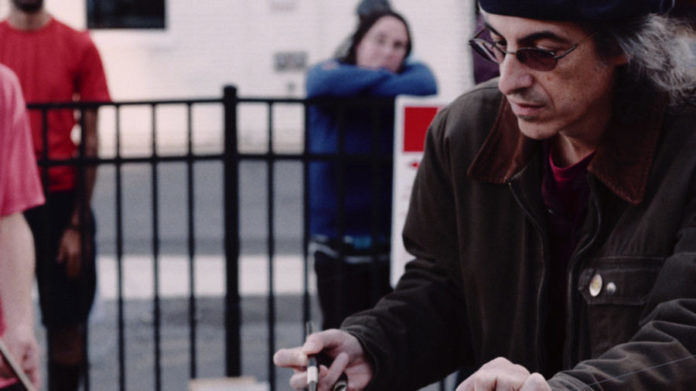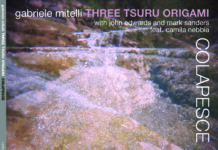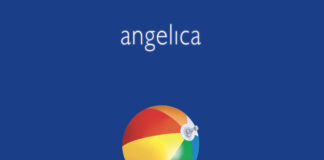di Daniel Barbiero
In questo sito, del contrabbassista Daniel Barbiero ho già avuto modo di parlare (1). Residente a Washington DC, Daniel è uno dei più attivi ed oculati musicisti di quella zona, sempre proteso alle potenzialità future del suo strumento, condividendo la passione per il jazz, la musica contemporanea, l’elettronica e soprattutto l’esperienza della libera improvvisazione profusa anche nella danza. (questo il suo sito: http://danielbarbiero.wordpress.com/)
Barbiero (che ha origini chiaramente italiane incentrate nel beneventano sebbene nato e cresciuto negli Stati Uniti) è anche un ottimo recensore e di lui non posso sottacere i trascorsi da filosofo di cui anch’io ignoravo l’esistenza, nonostante le nostre frequenti conversazioni.
E’ con piacere, quindi, che pubblico una sua disquisizione in materia musicale, con la convinzione che essa sarà la prima di una lunga serie. Grazie, Dan.
(1) vedi tutto ciò che ho scritto su di lui con riguardo al progetto contemporary jazz dei Colla Parte, nel trio “ambientale” dei Mercury Fools the Alchemist, nelle collaborazioni con i percussionisti Tatsuya Nakatani e Andrea Centazzo, le incursioni elettroacustiche con Steve Hilmy e Chris Videll, nonchè la sua attività solistica e come direttore di un progetto di danza con la free improvisation.
___________________________________
Gesture – Event – Structure
Many of my recent compositions, such as Not One Nor, Eighteen Events for Double Bass, and after 30 X 12 involve the placement of tones, sounds and pauses as a series of distinct events. In composing in this way I’m concerned not only with the materials I use and the environmental conditions constraining and enabling their use, but with the gestural dimension of the performance.
By “gesture” I mean a discrete action to be taken in relation to the sound material. Such an action might be directed toward a tone to be produced, a part of the instrument to be interacted with or acted upon, or any of a variety of movements (or non-movements) taking place in a musical context. The gesture may be realized as a given pitch or harmony, but it can also produce an unconventional sound or even an activity directed toward a given part of an instrument’s geography.
The gesture is something quite apart from the specific harmonic/tonal content that may arise from it. It is, above all, an action. The idea of the sound gesture is an extension of the idea of the physical gesture—that is, a movement with an expressive or communicative intent.
The notion of gesture is attractive because of its capacity to embrace not only standard practices of musical performance, but a wide variety of techniques and activities relevant to the exploration of extra-conventional sounds in a broader musical context. My work often draws on these kinds of sounds.
It’s easy to see the gestural dimension of a work as residing in real-time performance, but it can also be an element in a composition. In fact much of my recent music incorporates gesture into its compositional structure. Individual gestures are drawn from a given vocabulary of gestures, and then arranged sequentially into long-period phrases. These phrases are in turn structured as events—that is, discrete units in which a gesture or complex of gestures is called for. Structured this way, the composition embodies a form following the function of the gesture.
The function of the gesture can be, in addition to generating a desired sound or set of sounds, a letting in of stillness. These stillnesses are in fact the product of a particular type of gesture—the negative gesture, or the action of non-action. I’m reminded here of Franz Kline’s well-known assertion that he didn’t just paint black marks on a white canvas—he painted the white too, and gave it equal importance to the black. For Kline, as for my compositions, the seemingly empty expanse is in fact something that was put there.
Stillnesses can play a critical role in structuring a gestural composition, and in fact my own gestural compositions frequently employ them in this manner. Each event containing an action is separated from the preceding or following event by a stillness, or non-action. These stillnesses—negative spaces to the actions’ positive spaces—function as a means of bringing the actions’ consequent sounds into relation to their environment as well as to each other. They are a pivotal element of the whole.
The ostensibly empty spaces created by stillnesses are as much a part of the composition—are as deliberately put there—as are the intended sounds they complement.
By including stillnesses in the structure of the composition I hope to bring to the listener’s awareness the internal relationships characterizing the composition—that is, the relationships binding individual actions together—as well the external relationships binding the work to its environment. The latter may be the physical space in which the work is performed, with its properties and their impact on the way the work will sound, or the ambient sounds surrounding the performance.
Conclusion
Composition by gesture conveys a dynamic of action and non-action, of intended sound and stillness. This is in essence the dynamic that characterizes the flux of experience. This latter is the fundamental ground on which the performance is situated—it is a kind field that pre-exists any given action and the sounds that emerge as consequences of those actions. What we might call this way of being of the gesture is what a composition structured as a series of action events attempts to represent—points that emerge like islands in the flow of experience.







